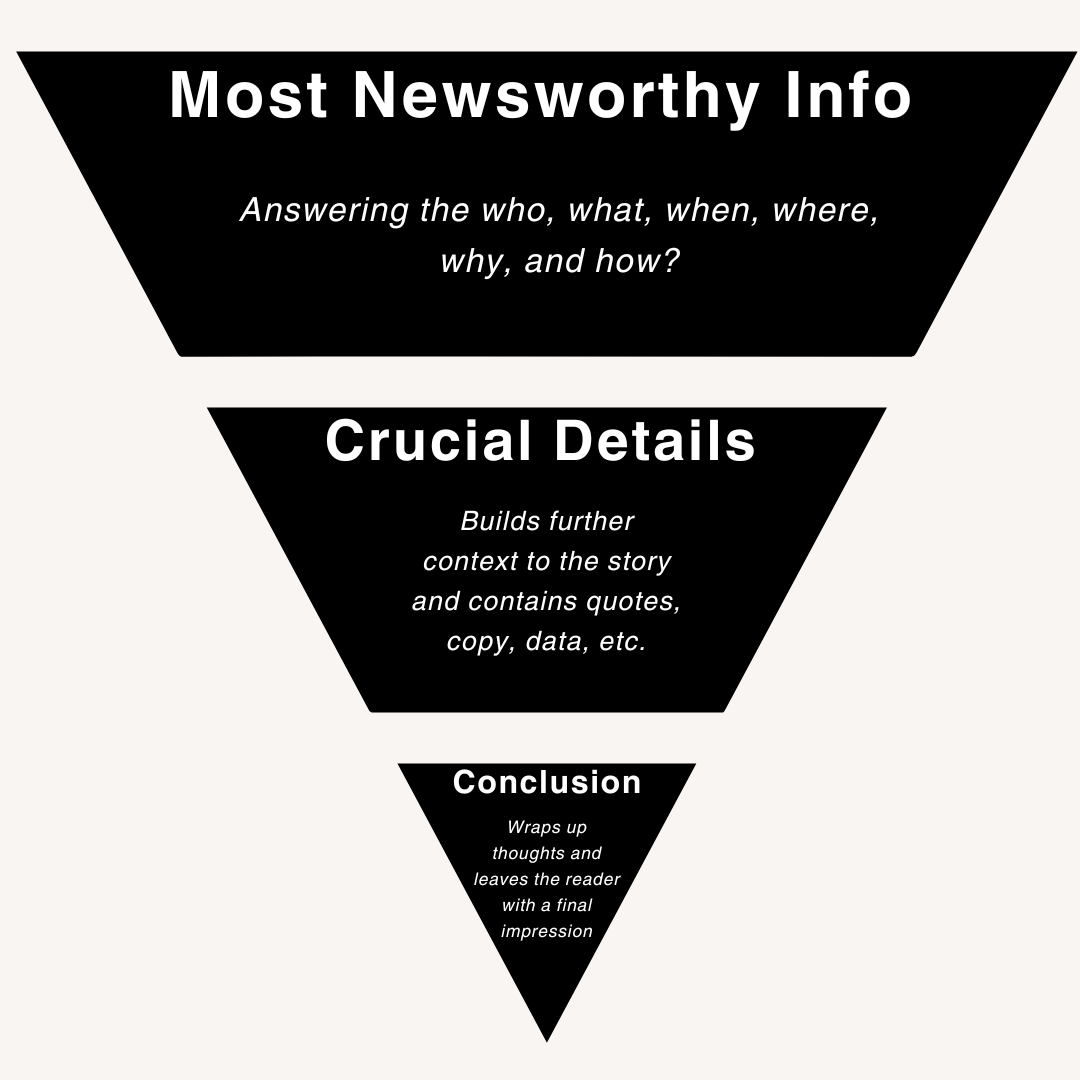Imagine a pyramid – a broad base supporting a tapering peak. In journalism, this pyramid flips on its head, becoming a fundamental structure known as the inverted pyramid. It’s a storytelling technique that prioritizes placing the most crucial information at the beginning of your article.

Why Use the Inverted Pyramid?
- It prioritizes the most newsworthy and essential information in the lead paragraph. This caters to readers with limited attention spans, allowing them to grasp the core details quickly.
- Editors often need to cut stories for space constraints, so this ensures your most critical information remains intact even if the article is shortened.
- By presenting the most important information upfront, the inverted pyramid fosters clarity and ensures readers aren’t left confused as they continue reading.
The Structure
- The Lede: This answers the five essential questions of journalism: who, what, when, where, and why (and sometimes how).
- The Nut Graph: This subsequent paragraph provides additional details, context, and supporting evidence for the information presented in the lead. It does not include quotes, data, or stats but builds upon the foundation laid in the lead paragraph.
- …then you get into writing the story and using quotes, data, etc.
Things to Remember
- While the inverted pyramid provides a strong foundation, it doesn’t have to be a rigid structure. Feature stories or investigative pieces might allow for more creative approaches for example, but the core principle of prioritizing essential information remains constant.
- The inverted pyramid shouldn’t be seen as a formula for dry, monotonous writing. You can incorporate strong verbs, vivid descriptions, and a clear narrative voice to make your story engaging even within a structure.
